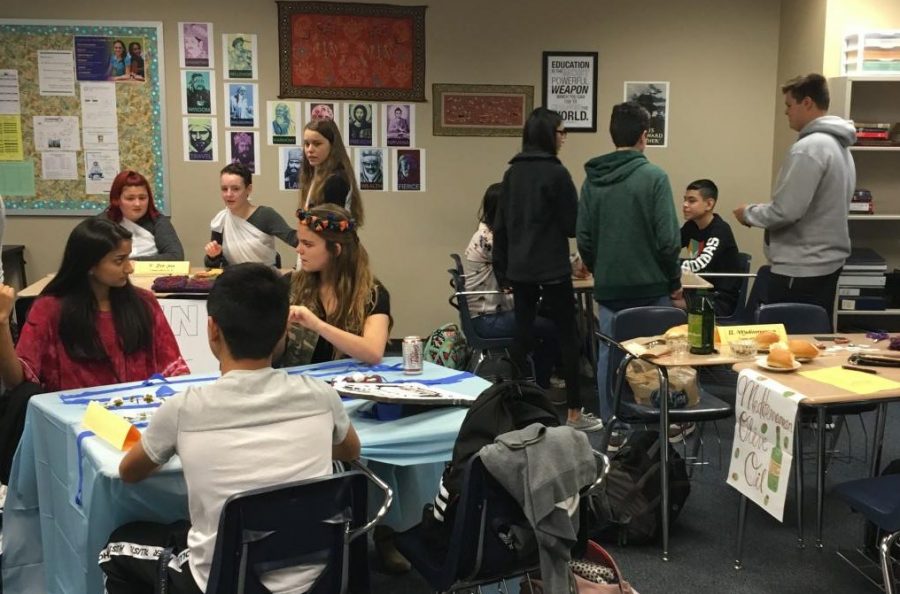Cunningham’s Classes Recreate Trade Routes
December 13, 2018
One thousand years ago, powerful countries across Europe, Africa, and Asia exchanged goods and culture through vast trade networks. Mrs. Alisa Cunningham’s AP World History classes got the chance to recreate the same experience, filled with both trusting and bitter relationships, cheated exchanges, and one victorious region.
When World History students walked into their classroom one Friday in November, they had prepared to conquer the trade networks. Separated into groups of around three, students had to represent one of eight major world regions around the year 1000. From Western Europe to East Asia, goods such as olive oil, silk, and linen were represented by props brought in by World History students and partly provided by Mrs. Cunningham.
“I think the purpose of the trade simulation was to give us a perspective of the people who actively participated in these trans-regional trade routes during the time in which they were most beneficial to the world economy,” Channing Saenz (10) said. “To truly understand how they functioned and how goods were dispersed, we had to step into their shoes and experience the alliances that we were able to form and the difficulties that arose for each particular region.”
Representing major world geographic regions meant using real props, lively posters, and even full body costumes of medieval figures. Looking around the classroom, you would see diverse and distinctively separate groups and what items they provide. The simulation lasted four treacherous rounds of trading, with events scattered throughout such as random invasions or deals forced upon participating nations. This added to the intensity and strategy needed for one group to possibly emerge victorious.
“The best part of the simulation was having to interact with a limited number of nations, forcing negotiations to be successful,” Adrian Zapata (10) said. “My region was responsible for trading olive oil, and by making good alliances with our neighboring regions we were able to win for our class period.”
As the game went on, the passion and determination to win began to take over.
“My favorite part was negotiating the trade goods with all of the other regions. Once we got further into the rounds, it became really competitive and I think everyone was having fun with it,” Saenz said. “I really enjoyed how we got to laugh and enjoy ourselves and make people work for it when our goods were in high demand.”
According to previous students, the AP World History global trade simulation was the most memorable part of the entire course. Nobody knew what exactly to expect when walking into their World History class, but a truly memorable experience was crafted.


